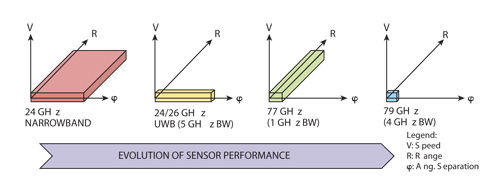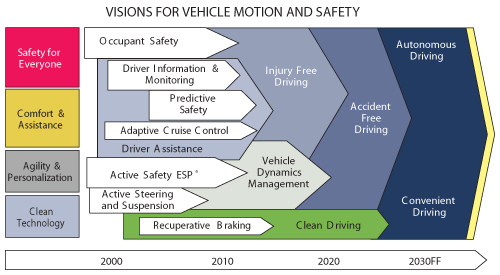Handling the sticky legal issues
As they grapple with what autonomous vehicles might mean for their industry, the legal frontier remains uncertain as well. One possible solution? A payout fund set up to compensate victims of driverless car accidents. That could be modeled similar to the Health and Human Services Department's vaccine injury compensation fund, which takes a 75-cent tax from every purchased vaccine. The no-fault program helps those who have been hurt by vaccine-related incidents without exposing the medical community to legal battles and expensive damages payouts.
SaberTek | Automotive Radar
The following article is a good description of the odyssey of automotive radar through different technologies, operating bands, and operational concepts. Europeans seem to be taking the lead.
Automotive Radar: From Its Origins to Future Directions | 2013-09-15 | Microwave Journal
An Idea Whose Time Had Not Come
As early as 1992, the EATON-VORAD collision warning system (CWS) at 24 GHz was installed in more than 4000 buses and trucks in the U.S., providing an acoustic warning for the driver only. Having been driven on more than 900 million kilometres of road, the amount of accidents per km travelled could be reduced by more than 50 percent; more than that, the resulting severity of accidents still occurring was significantly reduced. However, the radar units had to be removed due to protests from the U.S.-driver-unions as the CWS radar made drivers ‘transparent’ to their employers and the drivers objected. Clearly, the time was not yet ready for such a system.Maybe now is the time - the next big thing
Now, automotive radar in all its facets, from LRR via MRR to SRR, has shown that it has the capability to reduce the number and the severity of road accidents. We are currently in the “decade of action for road safety 2011-2020” and autonomous driving has come into direct focus with automotive radar being the workhorse for this ADAS approach in the future. To put it into words: today we are already able to drive with:- “Feet off” – employing ACC systems like Distronic Plus
- “Hands off” – becomes feasible using the upcoming ‘Autobahn Pilot’
- “Eyes off” – has still to be demonstrated and made possible.
- or maybe not so soon, according to Chrisian Science Monitor, and MIT Tech Review
Automotive Radar - 77GHz
Future trends for automotive radars: Towards the 79 GHz band - Road safety | ITU News
Benefits of W band (the 79 GHz band)
Higher frequency radar systems tend to perform better because they are more reliable and more accurate. This has been shown by several studies, including the European Union’s More Safety for All by Radar Interference Mitigation (MOSARIM) project (www.mosarim.eu).
Along with a greater capability for distinguishing between objects, the main advantages of the 77 GHz to 81 GHz frequency range (79 GHz band) are that radar devices can be much smaller, a single technology can be used for all applications, and the risk of mutual interference is low because of the smaller emission power required.
MOSARIM project at 9th EuRAD 2012 in Amsterdam:


No comments:
Post a Comment